#Hansel and Gretel
Text
Do you know about Ludwig Bechstein? Well you should.
But do not worry: if you never heard of his name until now, it is perfectly normal. In a similar way to madame d'Aulnoy in France, Ludwig Bechstein was one of the great names and influential sources of the fairytale in Germany, but fell into complete obscurity due to being overshadowed in modern days by a contemporary (Charles Perrault for madame d'Aulnoy, the brothers Grimm for Bechstein).
Ludwig Bechstein was, just like the brothers Grimm, a German collector of fairytales (Märchen in German), and just like them he published an anthology of them. However, whereas the brothers Grimm started publishing their work in the early 1810s with re-editions later on, Bechstein published the first volume of his collection in 1845, and the second volume in 1856.
And here's the thing: Bechstein was MUCH, MUCH more well-known in Germany than the brothers Grimm, for the rest of the 19th century. While yes the brothers Grimm were a big success and a huge best-seller, Bechstein's fairytales were even more so. In fact his fairytales were THE de facto German fairytales of the 19th century - until the brothers Grimm's international celebrity (because their fairytales had crossed the Germanic frontiers into English and French-speaking countries, while Bechstein's had not) came back and made their own fairytales overshadow, and then completely eclipse/bury Bechstein's own fairytales.
Why is this important? Because Bechstein had in his collection several fairytales that overlapped with those of the Grimm: for example, as I will show above, both collections had an "Hansel and Gretel", and " Little Red Riding Hood". But while we know today the Grimm's version better, it was the Bechstein's version that the 19th century children knew about. And there is one big difference between the two sets of tales: while the brothers Grimm were obsessed with an "accuracy" of the stories (or what they believed was an "accuracy"), stitching stories together or writing them so as to create what felt like a traditional oral story as it would be told to you by a random German person, Bechstein allowed himself a more "literary approach". He never reached the level of an Andersen or a d'Aulnoy that would entirely rewrite a folk-tale into a long poetic epic... But he allowed himself to correct inaccuracies in the stories he collected, and to add personal details to make the story fit his tastes better, and to develop the dialogues into more than just nonsensical little rhymes, so while he kept short and simple stories like the Grimms, they definitively were more literary stories.
To give you two good examples of the differences, here are Bechstein's changes to the two stories I described above.
The main change within Little Red Riding Hood is Bechstein making the girl more intelligent and well-meaning than in the Grimms version, and the Wolf's deception even more devious. When the wolf tells the girl she could go pick up flowers and play outside of the path, like in the Grimm's tale, Bechstein's Riding Hood stops and asks roughly (not a quote I recap here): "Hey, mister Wolf, since you know so much about herbs and plants within this forest - do you know about any medicinal plant around, because if there is an herb that could heal my sick grandma, it would be super cool!". And the wolf jumps on the occassion, pretending he is a doctor - and he lists to her a whole set of flowers and herbs and berries she can pick up that would heal her grandmother... except all the plants he describes to her are poison, and the Wolf just mocks his intended victim. The joke also relies on the fact that all the plants he lists are named after wolves, with the beast convincing the girl it is because wolves are good and great things. (There's the wolf's-foot, the wolf's milk, the wolf's berries, the wolfswort - names which do correspond to real-like plants such as the spurge laurel or the aconit).
The ending is also slightly modified. The hunter is attracted to the grandma's house by hearing the unusually loud snoring of the wolf - he thinks something is wrong with the grand-mother, maybe she is dying, only to find the wolf in her place. He immediately grabs his rifle to kill it but then pause wondering "Hey, the little grandma is nowhere to be seen... and she was a scrawny woman... Better check if he did not eat her". And so he opens the wolf's belly (and the wolf is still asleep during all that, he really is a deep sleeper). When the humans decide to put stones in the wolf's belly, they explicitely reference in-universe the "Wolf and the seven goats" story, which gives them the idea. (Quite a fun and accurate detail since we know that the brothers Grimm attached the episode of the stone to the Little Red Riding Hood story by taking it from the "Wolf and the seven goats" one)
As for Hansel and Gretel, the witch is described differently from the Grimms (she is still a very, very old woman who has something wrong with her eyes, but she isn't red-eyed like the Grimm, rather she has "grass-green" rheumy eyes, and she has no cane or crutches, Bechstein rather insisting on her being a hunchback and havin a very, very large nose.) But the main difference occurs in the climax, which is very different from the Grimm.
The witch still tries to push Gretel in the oven, but she doesn't ask the girl to check if it is "hot enough". Rather she put bread in it to go with her Hansel-roast, and she asks the girl to check if the bread is brown yet. And Gretel is about to obey... when the snow-white bird that led them to the house reappears and warns her of an upcoming danger with human words. The girl immediately guesses the trick, and pushes the witch in the oven. Second big change: the "treasures" the children obtain are not the witch's, nor do they find it on their own. As they exit the house, the treasure literaly rains on them - because all the birds of the forest arrived and dropped the precious items on them while singing "For the crumbs of bread / Pearls an gems instead". As the children understand, the birds were grateful for what they believe was food offered to them (the bread crumbs) and reward the children with the treasure.
Oh yes and the mother (no stepmother here) doesn't die. Rather she and her husband are miserable in their house because they regret leaving their kids, so they are very happy when they return, and with the treasure they all are certain to never go hungry again. Happy end. (Because here the mother isn't a bad person like in the Grimm - she just really, REALLY was a desperate woman who didn't want to see her own children die before her eyes)
#little red riding hood#hansel and gretel#german fairytales#ludwig bechstein#bechstein fairytales#brothers grimm#grimm fairytales#grimm fairy tales#german fairy tales
28 notes
·
View notes
Text


Felicitas Kuhn-Klapschy
18 notes
·
View notes
Text

Anne Sexton, Transformations; from 'Hansel and Gretel'
822 notes
·
View notes
Text
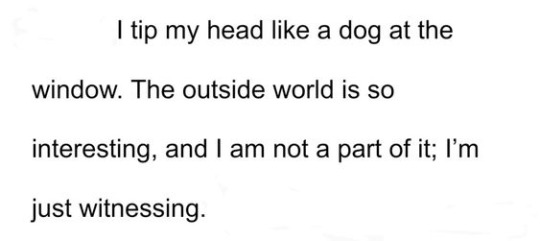


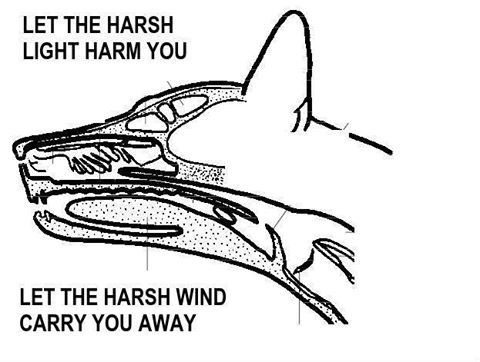



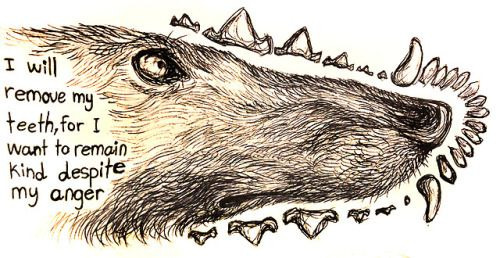

"You can love a monster, it can even love you back, but that doesn't change its nature."
unknown / Mitski Cop Car / Catherynne M. Valente The Bread We Eat in Dreams / Jonny Bolduc Harsh Light / Margaret Atwood / Sylvia Plath Poem for a Birthday: Who / Anne Sexton Hansel and Gretel "The Complete Poems of Anne Sexton" / @/thymoss (tumblr) / unknown
i. unknown [ "I tip my head like a dog at the window. The outside world is so interesting, and I am not a part of it; I'm just witnessing." ]
ii. Mitski Cop Car [ "I get mean when I'm nervous like a bad dog / I get mean when I'm nervous like a bad dog ]
iii. Catherynne M. Valente The Bread We Eat in Dreams [ "I said: I could be a wolf for you. I could put my teeth on your throat. I could growl. I could eat you whole. I could wait for you in the dark. I could howl against your hair. ]
iv. Jonny Bolduc Harsh Light [ medical diagram of a dog. "Let the harsh light warm you / Let the harsh wind carry you away ]
v. Margaret Atwood [ "you dangle on the leash of your own longing; / your need grows teeth ]
vi. Sylvia Plath Poem for a Birthday: Who [ "Eaten or rotten. I am all mouth." ]
vii. Anne Sexton Hansel and Gretel [ I want to bite, / I want to chew, / I will eat you up. ]
viii. @/thymoss (tumblr) [ sketch of an animal with teeth surrounding the outside of its snout pointing away from it. "I will remove my teeth, for I want to remain kind despite my anger" ]
ix. unknown [ "I love you like a rotten dog, / I love you like my canines are falling out of my gums / Like a monster, like a beast / Like something not worth loving back" ]
#mitski#cop car#catherynne m valente#the bread we eat in dreams#jonny bolduc#harsh light#margaret atwood#sylvia plath#poem for a birthday#anne sexton#hansel and gretel#web weave#poetry#poem#web weaving#poetry web weaving#poetry web weave#words#writing#quote#text#on heartbreak#on love#on self destruction#spilled ink#spilled poetry#dark academia#spilled thoughts#dark academia quote#dark academia poetry
2K notes
·
View notes
Text

[ THE EVILLIOUS TAROT PROJECT ]
18. The Moon
---
#vocaloid#vocaloid fanart#evillious fanart#evillious chronicles#mothy#the evillious tarot project#kagamine rin#kagamine len#meiko vocaloid#meiko#meta salmhofer#hansel and gretel#the moon
352 notes
·
View notes
Text

by Louise Glück
457 notes
·
View notes
Text

'Hansel & Gretel' by Kate Baylay
1K notes
·
View notes
Text




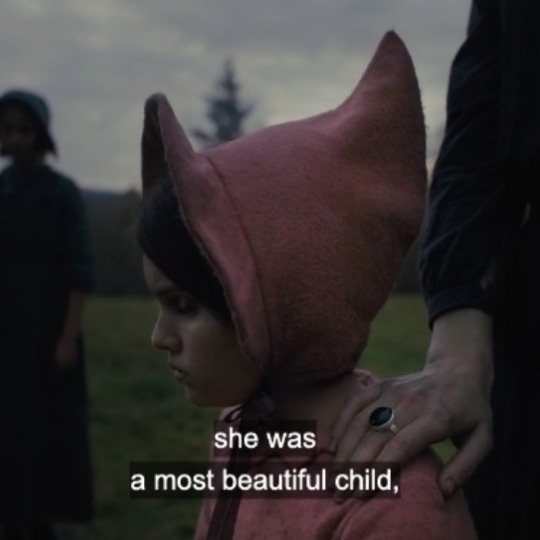


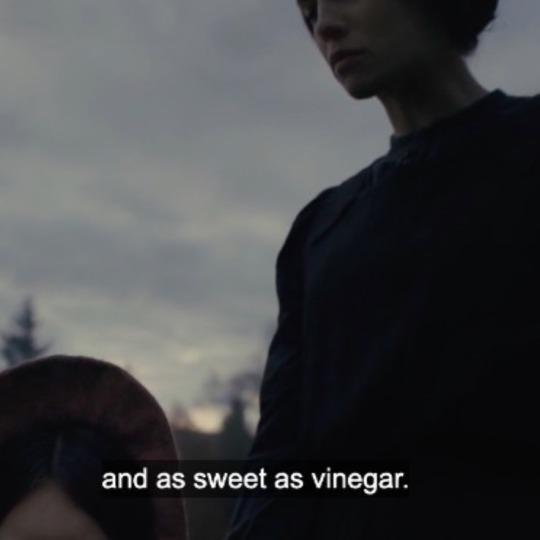


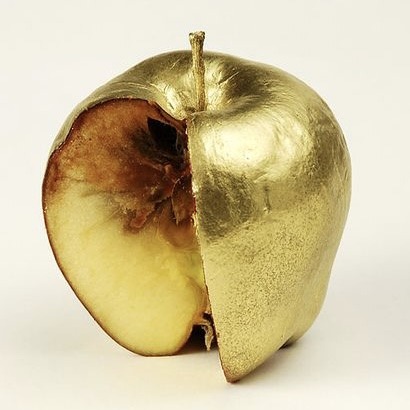

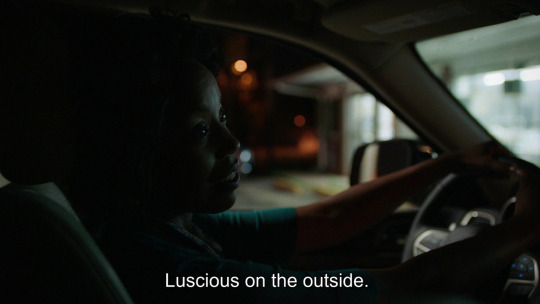


Chronic Illness - Christina Marie Brown / Helter Skelter (2012) / The Secret Diary of Laura Palmer / Gretel & Hansel (2020) / Pernille Augustson / Spit It Out - Softcult / Sharp Objects / All Eyes On You - Katy McAllister
#helter skelter#laura palmer#twin peaks#david lynch#gretel and hansel#sharp objects#gillian flynn#amy adams#camille preaker#brothers grimm#the brothers grimm#parallels#rotten#horror#hansel and gretel#gretel & hansel#hansel & gretel#literature#softcult#spit it out
986 notes
·
View notes
Text
Bricks of gingerbread were laid with layers of icing for mortar. Caramel coloured light gleamed through sugar glass windows.
The gingerbread… things stumbled through the kitchen on legs unused to walking. They leaned on each other, gingerbread hands on gingerbread shoulders, each about the height of a child.
Ethel Muckwillow, witch, stared at them in unmasked horror.
Agnes Blacktreacle said: “-And there I found them in the woods, starved to death, dead as a doornail. Well, I couldn’t leave that alone, otherwise people in the village would accuse me of something!”
She poured a spoonful of sugar into her tea and carefully lifted her cup when one of the things stumbled and slammed its gingerbread head into the table with a thunk and a sticky groan. “And I thought, I have all these baking supplies from when I made the house, so why not make some replacements?” she said, pouring another spoonful of sugar. “I whipped them up in about a day – once they figure out walking, I’ll send them back home, and nobody will be none the wiser.”
The gingerbread boy – or at least, the gingerbread thing decorated with icing to look like boy’s clothes and a glob of buttercream teased into a vaguely masculine hairstyle – held its head and groaned. The gingerbread thing with long, dark, marzipan hair twisted the hem of its gingerbread skirt nervously. It looked up at Agnes and opened its mouth to reveal a tongue made of a glacé cherry.
It said: “Aaaghlaglaglagglegglgl.”
Agnes clucked her tongue and got up to fuss over the gingerbread boy. She was wearing a frilly apron on top of the standard witching uniform. It didn't go well with the look at all.
Ethel Muckwillow stared at her fellow witch. Agnes had a tendency to go too far with these kinds of things, and it was just possible that this may have been too far even for her.
“Gingerbread changelings,” she said.
Agnes looked up from pressing a marshmallow bandage to the gingerbread boy’s forehead and beamed. “Gingelings, if you will,” she said.
“I won’t,” Ethel said. “They were sent into the woods because they and their parents were starving, and you will be sending them back a pair of giant gingerbread changelings.”
“Yes?”
Ethel waited for the penny to drop. It didn’t.
“Aggie,” she said. “They’re going to eat them.”
Agnes gasped and clasped her hands over the gingerbread things’ ears. “They wouldn’t!”
“They’re starving peasants and you’re going to deliver them a walking, talking Christmas dessert.”
Agnes looked at Ethel. She looked at the gingerbread things. She sagged. “Damn,” she muttered.
“Sorry.”
“What if — what if I made a fondant? I could try to hide the gingerbread with a fondant.”
Ethel looked at the gingerbread things. They stared back with gleaming, beady, currant eyes. The gingerbread girl had started to chew on its marzipan hair.
“No,” she said. “I don’t think that would help.”
#fairy tales#hansel and gretel#the gingerbread man#short story#narrativia#child death mention#slightly tweaked the ending#if you saw the old version. no you didn’t
251 notes
·
View notes
Text
Books That Are Fairytale Retellings

The Sleeper and The Spindle by Neil Gaiman
A Court Of Thorns and Roses by Sarah J. Maal
Cinderella Is Dead by Kalynn Bayron
The Girl In Red by Christina Henry
Once Upon A Time: A Story Collection by Shannon Hale
Lost In The Never Woods by Aiden Thomas
The True Story Of Hansel and Gretel by Louise Murphy
Cinder by Marissa Meyer
The Big Over Easy by Jasper Fforde
The Mermaid by Christina Henry
House Of Salt and Sorrows by Erin A. Craig
Girls Made Of Snow And Glass by Melissa Bashardoust
The Storybook of Legends by Shannon Hale
The Wishing Spell by Chris Colfer
Forest Of A Thousand Lanterns by Julie C. Dao
Geekerella by Ashley Poston
The Fourth Bear by Jasper Fforde
Gingerbread by Helen Oyeyemi
To Kill A Kingdom by Alexandra Christo
Six Crimson Cranes by Elizabeth Lim
Once Upon A Broken Heart by Stephanie Garber
#fairytale#fairytale retelling#the brothers grimm#ever after high#books#book blog#booklr#readblr#book reccs#book recommendations#bookaddict#book list#fairytale book list#fairytale books#hans christian andersen#the little mermaid#little red riding hood#nursery crimes#beauty and the beast#hansel and gretel#cinderella#snow white#bookworm#books and reading
287 notes
·
View notes
Photo
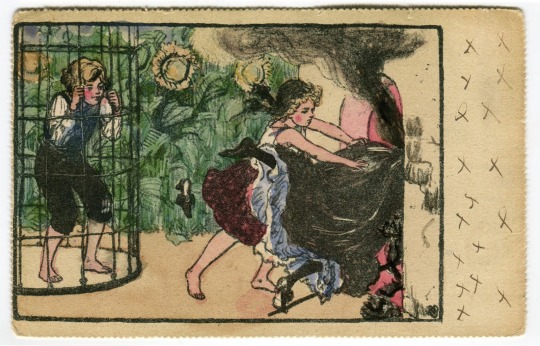
“Hansel and Gretel” postcard
97 notes
·
View notes
Text
Why was Hansel the meal of the witch?
This is a question I was aked recently, and I thought it would make a good subject for a post. "Why did the witch only try to fatten up and eat Hansel? Why didn't she imprison and fattened up Gretel too? Why did she choose to make Gretel her slave instead of Hansel?"
Which is actually a fascinating question. Now, I do not promise that there is some grand truth or secret meaning behind this. It is just a little detail and some technical workings of fairytales. But it is a point that many authors and rewriters have taken an interest upon, and that if a true well of reinterpretations.
So let's go... Why was Hansel the meal, and Gretel the slave?
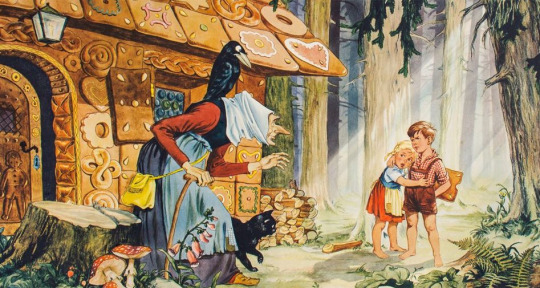
If we go by the "canon" of the text (of course "canonical" fairytales do not exist, this is just an expression) - if we go by the Brothers Grimm's text, we... well we do not know. It is not specified anywhere why the witch decides to lock up and fatten up Hansel out of the siblings, and to not do the same thing for Gretel. There is no reason explicitely spelled out or given. Maybe she simply prefers the meat of boys over the one of girls? This absence of justification, and the apparent "randomness" of the choice opens a door for authors who would like to change things: for example in "A Tale Dark and Grimm" (the book, not the Netflix series), it is both Hansel and Gretel that are fattened up by the witch, and she only picks Hansel as the first one to be roasted. The Looney Tunes Hansel and Gretel also were both in the cooking pot of the witch Hazel...
The text only leaves implications for the reader. For example, the need for the witch to have a slave/assistant to help her with the chores is implied by the facts that she is 1) elderly 2) has a very bad sight and 3) walks with crutches (a very important point). So it is understandable she would require a slave to help her - but then why pick Gretel, and not Hansel? Again, the text does not answer. Many people like to portray Hansel as the oldest child of the duo, and Gretel as a younger sister - this is because Hansel seems to be the strongest, bravest and most intelligent one, as well as with how his name always comes first in the text, Gretel being after him. Maybe the witch chose to eat him first because he was precisely older, and thus there was a more developed body to eat? Even if the siblings are of the same age, we can always imagine the very old and present male/female dichotomy that claims that men's body are naturaly stronger, larger and meatier than women's, who have graceful, slender, lighter bodies. Maybe such a concept is at work, putting forward a mindset where a cannibal witch will always go for boys first as a main course, and girls next as an appetizer...
One possible reading of the story is that the witch only had enough place to lock up ONE child and thus had to make a choice. Maybe there wasn't enough room for two kids in her prison for future meals? This interpretation is supported by the ORIGINAL text of the Grimm's fairytale. In the first edition of the brothers Grimm's fairytales (provided by Jack Zipes), there is an explicit mention of the place Hansel is locked in: it isn't some sort of stable or cage as it would later be described, oh no! It is a chicken coop so small Hansel can BARELY MOVE. It is a really tiny prison, in which he barely fits. Of course, on a practical side, it can help with the whole fattening process since having a child eat rich meals without ever moving is certain to make him plump in no time (just look at these horrible industrial farms and how they lock up animals in tiny cages) ; but this detail actually explained why the witch only placed her efforts on one child, and not two: she obviously had only enough to place to lock up one kid, and had to deal with the other in a different way.
But even if we admit all those implications - that the elderly, handicaped witch needed a help, that she had only enough room to lock up one child, that maybe Hansel as an older boy makes a better meal than Gretel - there are still some strange and bizarre logical holes. For example, the witch beats up and starves and exhausts Gretel. This is the complete opposite of what she does to Hansel, who is pampered and fattened up - does this imply the witch maybe does NOT want to eat Gretel? Or does she really have only enough resources to fatten up one child, and can only afford making Gretel more edible once she is done with Hansel?
Again, mysteries upon mysteries. Fairytales are not created to work on practical details or actual psychological processes - they are stories relying on powerful visuals and ancient motifs and a dream-logic-structure. When we are told that the witch locks up Hansel to fatten him up and eat him, and that Gretel is becoming an abused slave, we just accept it, because it works on a set of powerful visuals, such as the malnurished slave sister cooking and feeding her imprisoned and soon-to-be-killed brother. The idea of the sister being reduced to a tool in the process of killing her own brother is a very powerful one, never explicitly stated, but still present and sometimes used by adaptations. There was this German Hansel and Gretel movie released in 2005 that explicitly played on this: the children were never told by the witch her intentions when she locked up Hansel, and for the first week or so of Gretel being a slave and Hansel fattened up, they were left in the dark concerning the real intentions of their mysterious jailers. This was a stark contrast with many Americanized adaptations that have the witch gloating and explaining her cannibalistic desires to her victims, and which opened the door for some interesting plot points - in this movie's case, Gretel being quite jealous and envious of Hansel's new life of feasting and being kindly treated by the witch when she got all the insults and chores. Of course, when they discover the truth, their mutual feelings reverse as Hansel realizes his seemingly "easier" fate is actually the worst of the two.
Still, the text is left ambiguous and open-ended enough for us to imagine TONS of things. There could be a rewrite of the tale where the witch exclusively eats little boys, and hates little girls. One nterpretation of dark poetry of the tale can be found in Znescope's Gretel mini-series. Despite this mini-series having BIG flaws (the choice of the witch's true identity was... quite bad to be honest), it does have a very interestng and morbid answer to the "Why was Hansel the only one fattened up?" question. It chooses to depict this difference of treatment as a sick and cruel game the witch plays with her preys: Hansel and Gretel are both her prisoners, but she fattens up Hansel while she starves Gretel, to make a contrast between the two, simply out of a perverse amusement. There is one particularly striking image of the two children locked in two cages arranged like a weighing scale, with Hansel's cage going lower as he grows fatter and Gretel's going up as she becomes skeletal... It is a nice visual contrast that has been reused by various artists.
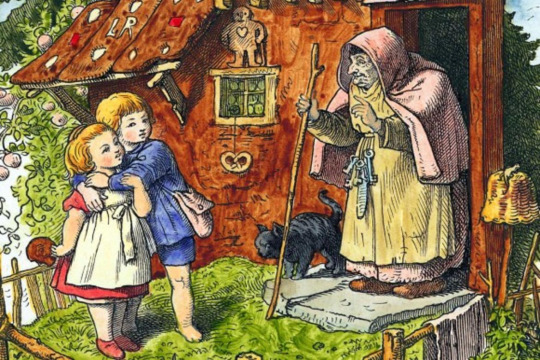
Now, I spoke mainly here of the content of the story and of the text itself. However, as I stated before, we must look beyond the story itself to understand why Hansel was to be the meal, and not Gretel. Or rather we need to look at the fairy tale's structure, on a meta-level.
As I said before, the fairy tale works here on a system of duality. Hansel and Gretel are meant to be a yin and a yang, complementary reflections. The boy and the girl, the brave and the coward, the cunning older brother and the crying little sister. The idea that their fates are "split" into the house of the witch not only furthers the anguish of the characters, who at this point were always together but now find themselves separated, unable to face together the same trials, but also keeps on playing on these visuals and motifs. As I said, there is something that many artists read in the tale, in the opposition between a malnourished Gretel and a feasting Hansel. This is part of the same duality of food and famine present all throughout the tale, such as the woodcutter's famished and poor household, opposed to the witch's house made of sweets and with chests full of pearls. The siblings represent two forms of abuse and evilness enacted by the witch, but in complementary forms: with Gretel the witch becomes a domestic abuser and an enslaver, with Hansel she becomes a jailer and an ogress.
One can also read in this an extension of the typical sexist duality between men and women in these old centuries: the fates the witch forces upon the two children can be caricatures of what each gender is supposed to "do" in such a society. Gretel, like women, is expected to do household chores and to cook for her "man" - here it is caricatured into her becoming a slave, and only helping fattening up her brother like some cattle. In return, Hansel, like a man, is supposed to be well-treated and well-fed, but here the caring wife/mother figure is a monstrous hag who only makes him feast so she could eat him later. In fact, it is quite interesting to see how both siblings are dehumanized and reduced to the status of animals - from Hansel being fattened up in the stables like some pig or chicken, to Gretel being fed leftovers like a dog.
All of that being said, there is another much needed argument that must be made: the answer fo thte question can be easily found in the story's structure. This is the most obvious solving of the problem when you consider it all: the story of Hansel and Gretel relies on the idea that the two children must save each other in turn. There is a balance in the tale, which bears the name of the two protagonists as heroes, but one before the other. During the first part of the tale, it is Hansel who takes the lead and the decisions. He is the cunning hero who tricks his parents, saves his sister from the woods, returns home thanks to his plan. Gretel is only seen being scared, and crying, and not doing anything except follow her brother around. In the second part of the tale, within the witch's house, it is Gretel who becomes the hero. Her brother is "out of the race", locked up away and unable to do anything, and it is Gretel who this time has to trick the deadly parental figure, come up with a clever ruse, and ultimately save her brother from death. This creates a perfect balance between the two characters: Hansel starts out as the hero protecting his useless sister, and then it is Gretel who vanquishes her uselessness to become the hero saving her own, impotent brother. The siblings need each other to survive, and thus save each other in turn. This is how the story works. And this is why Hansel must be the locked-up, fattened-up victim, so that his sister can save him. Else it would have been the story of "Hansel", and not "Hansel and Gretel".

All of that being said, a last point must be made about a final theory. A theory and reading of the tale that has been very prevalent and prominent in recent adaptations of the story.
The recent "Gretel and Hansel" horror movie did it. Before the (X horror movie) also did it. Neil Gaiman's Hansel and Gretel also used this idea. The comics Fables toyed with it in a side-way. And this idea is simple: the witch did not want to eat Gretel, but rather wanted to make her a witch like herself. Gretel wasn't the witch's slave, but unwilling apprentice.
This idea is born of course from a reconsideration of what a "witch" is, and the gender questions attached with the figure of the witch. In the original story, the witch is not a witch in the modern sense of the term, in fact she is a monster that is very clearly an ogress by another name. There is no question of learning how to be a witch, or making deal with dark powers, or anything like that. But when you read the tale with the modern sense of "witch", as a symbol of dark and hostile feminity, as a woman of power, who works against the domination of men, or the tyranny of patriarchy - when you consider all the gender questions surrounding real-life witches and the witch hunts, you see the witch's actions under a different eye. Her not wanting to eat Gretel at first, and making her do her chores, and forcing her to live with her, might hint at the fact she still considers her more "human" or more valuable than her brother, who is nothing but food, a mere cattle. Several of the modern reinventions of the tale, such as those stated above, decide to add the twist that the witch actually wants to shape or make the little girl into her image: from a slave doing the witch's chores, she becomes the witch apprentice, who is by her side in everything she does. Some of those readngs remove the elements of abuse towards Gretel, while others do not forget them. Neil Gaiman's take on the story is especially fascinating as the witch is explicitely described as oscillating between periods of sweetness and kidndness, promising Gretel all of her secrets and great powers, and periods of pure hatred and violence where she just insults and beats up the girl - all of it highlighting either the witch's madness, or a form of senility due to her old age.
But this theme of "Gretel as a future witch" or "Gretel as the witch's apprentice" ties in with another subtext well-hidden in the original text, but that many like to weave upon: Gretel as the "daughter" of the witch. In many of those rewrites and reinterpretations, the witch doesn't just treat Gretel as an apprentice, but as an heir or a replacement daughter. This is no surprise since it is very clear that in the original tale, the witch is the dark side of the mother figure, and an evil doppelganger of the wicked stepmother/mother of the siblings. As such, it makes sense for her to impose an abusive and unconsented motherhood upon Gretel - doesn't her forcing the girl to do all the chores not reminiscent of how famous fairytales stepmothers treat heroines like Cinderella? Such a perverse motherhood was already explicit and obvious in her treatment of Hansel: like a mother she nourishes and feeds Hansel (in fact she succeeds where the wicked stepmother failed), but this is all to devour him, in a ritual of "un-birth", she becomes a death-givers who doesn't expel a child out of her womb, but has it return to her stomach. [This is a very common and usual motif among ogres of fairytales, who are all caricatures of parenthood].
More generally, to have the witch act in such a way actually makes the fairytale more "feminist" somehow, but in a quite perverse way. Because in such a reading, we have a women-dominated world. The true active and powerful characters of the story are beings such as the wicked stepmother and the witch, who command, control and influence the other characters - especially the male ones. The father is a weak puppet who can't stand up to his wife, Hansel is reduced to a fat pig in a cage. Hansel did try to escape the tyranny of the wicked woman, but all he could do was push back his doom, and his plans ultimately failed. Gretel, as a woman herself, is given a special treatment - and in the "apprentice/daughter" interpretation, is "absorbed" by this world of wicked, dominating women. But she actually breaks from it, and kills the one that would have "turned" her - and it is telling and interesting that the only one who can have a true an full success, a definitive victory in this tale is Gretel. Hansel's plans work and save them, but only for a brief time, and his last plan fails dramaticaly, before he gets locked up and "out of the story". Gretel meanwhile, when she gets the courage and intelligence to act, proves herself much more efficient and definitive than her brother, as she puts a true end to the threat other them by killing the witch (and by extension killing the wicked stepmother/mother). This is something Hansel couldn't do - all he could was trck the wicked woman, and nullify her plans, but he could not remove the threat of the death and the hunger.
Anyway, as you can see, despite being a quite superficial and silly question, this fact (or rather absence of facts) opens up a whole jar of various interpretations, readings and themes, and proves the hidden complexity of these apparently "simple" stories.
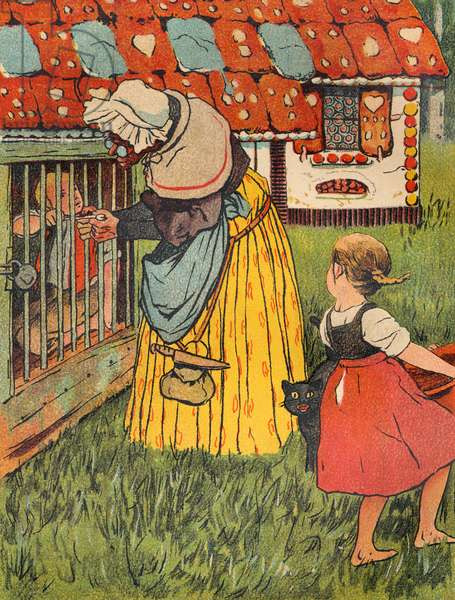
#hansel and gretel#hansel#gretel#witch#fairytale analysis#the gingerbread house witch#grimm fairytales#german fairytales#hansel and gretel adaptations
353 notes
·
View notes
Text
I wondered how often the future waits on the other side of the wall, knocking very quietly, too politely for us to hear, and I was filled with longing to reach back into my life and inform that unhappy girl: all around her was physical evidence proving her sorrows would end. I wanted to tell her that she would be saved, but not by an act of will: clever Gretel pretending she couldn't tell if the oven was hot and tricking the witch into showing her and shoving the witch in the oven. What would rescue her was time itself and, above all, its inexorability, the utter impossibility of anything ever staying the same.
Francine Prose, from Hansel and Gretel, as featured in My Mother She Killed Me, My Father He Ate Me: Forty New Fairy Tales
#francine prose#hansel and gretel#my mother she killed me my father he ate me#words#lit#on fairy tales#to be human#regarde comme ta fille est faite#of hope to bite on like a bullet
544 notes
·
View notes
Text

William de Leftwich Dodge - Hansel and Gretel. Act II, scene II (gravure).
#William de Leftwich Dodge#Hansel and Gretel#fairies#fairy tales#alone in the woods#alone in the forest#angel#angels#sleeping#apparition#dreaming
390 notes
·
View notes
Text
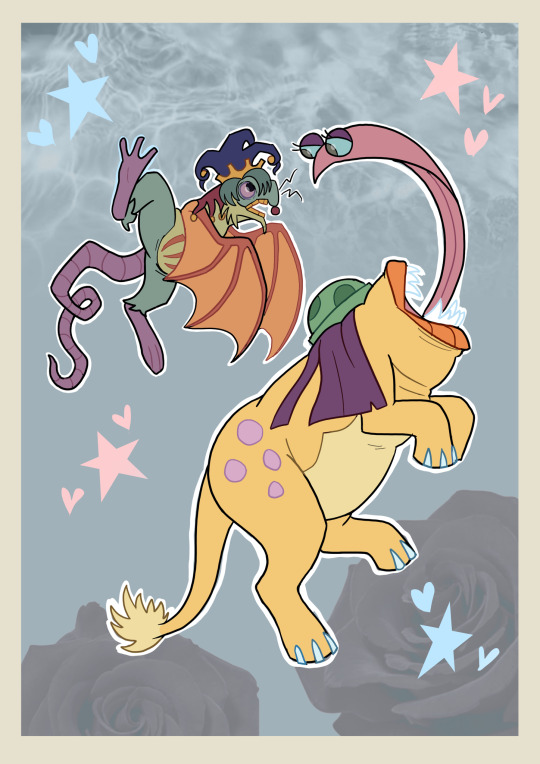
Sodikken fanart again because they’re my soul and I love them two.
I genuinely think the size difference between them is THAT huge. I love you Hansel, I love you Gretel.
#character art#art#artists on tumblr#gretel sodikken#hansel sodikken#sodikken#hansel and gretel#sodikken fanart
111 notes
·
View notes
Text


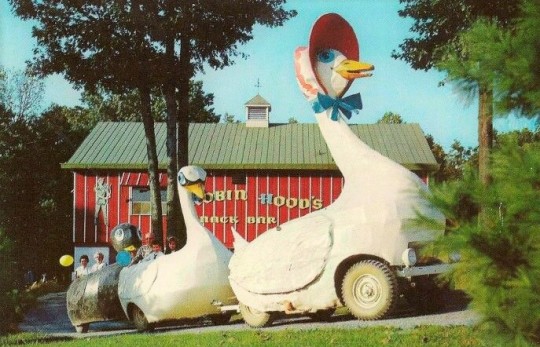
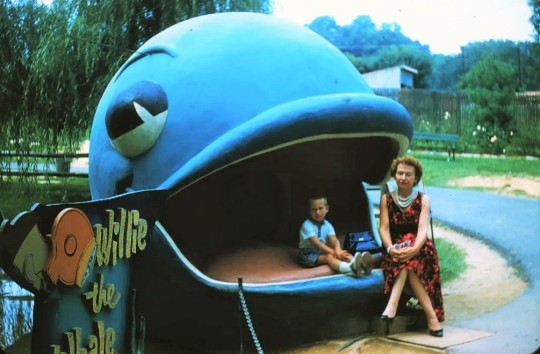
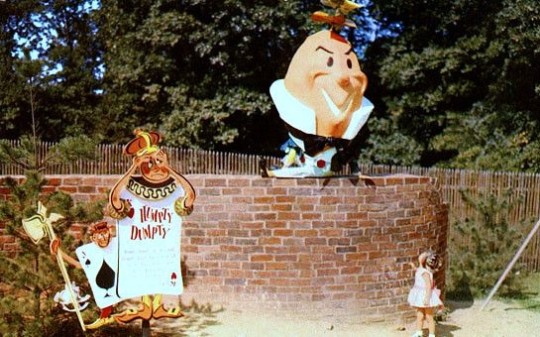
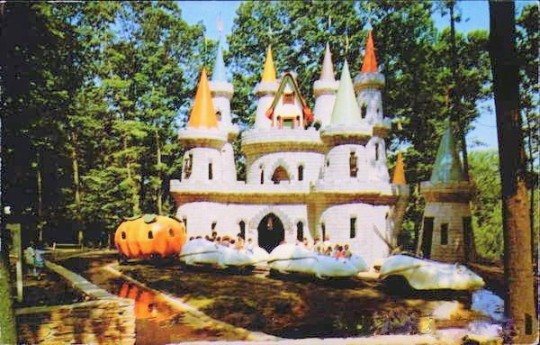

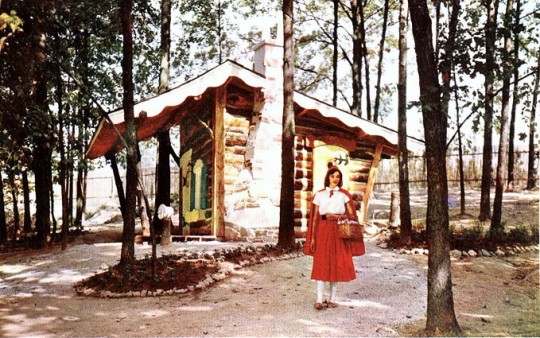


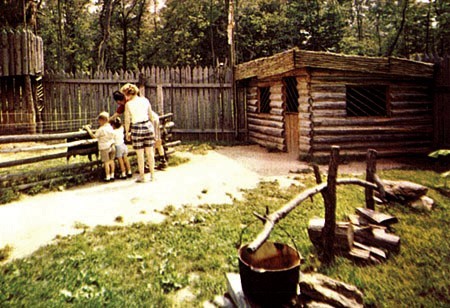



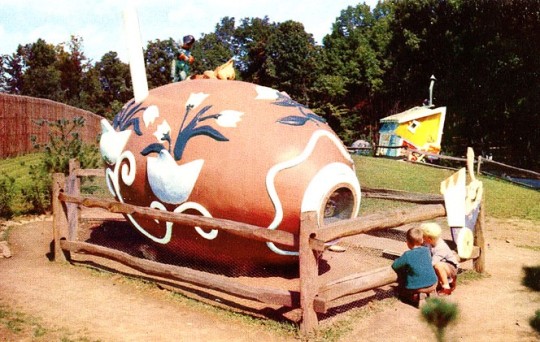
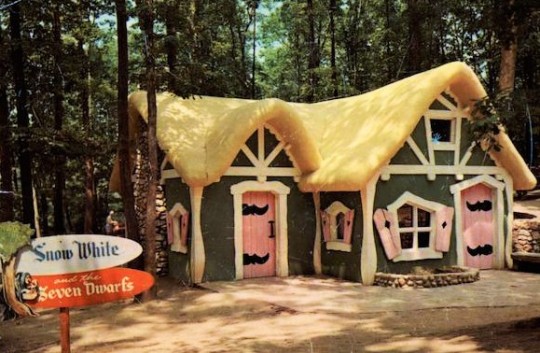

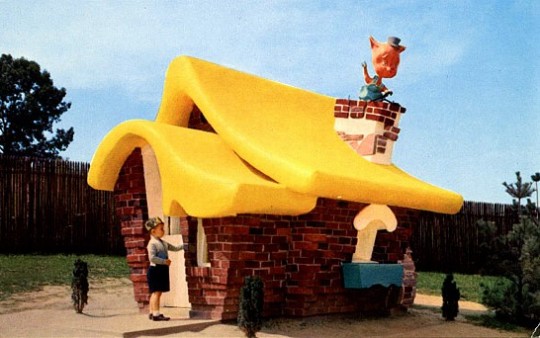
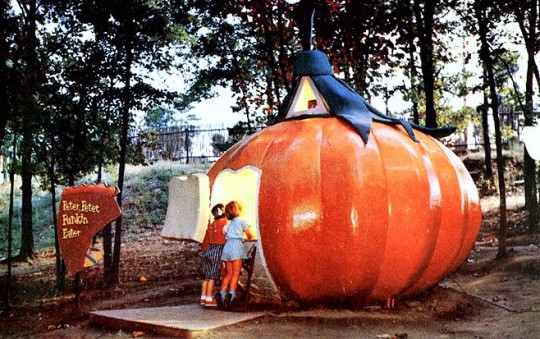


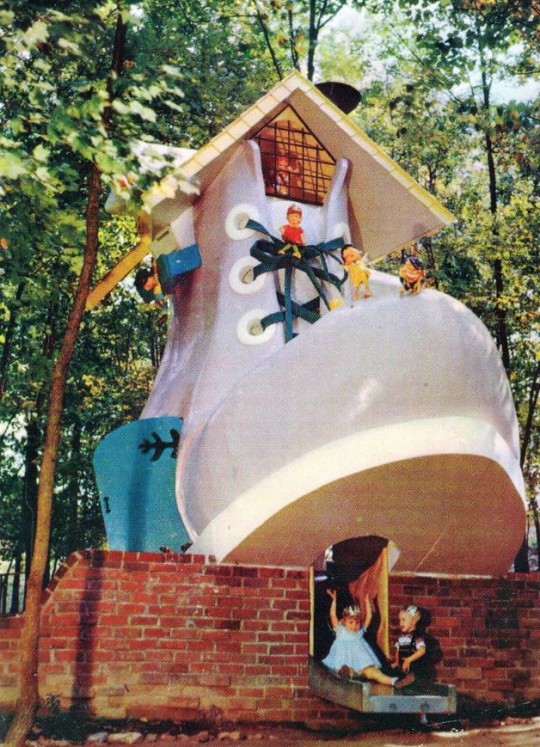
Enchanted Forest amusement park, Maryland (1950s/1960s)
#enchanted forest maryland#vintage amusement parks#vintage roadside attractions#vintage theme parks#nursery rhymes#fairy tales#cinderella#mother goose#humpty dumpty#willie the whale#hansel and gretel#little red riding hood#snow white#three little pigs#1950s#1960s
355 notes
·
View notes